How Light Polluted Is Your Backyard?

As an amateur astrophotographer or astronomer, there is a good chance you first started exploring the night sky in your backyard. The backyard is where I spend the most time under the stars, and my first experiences exploring the night sky with a telescope happened there.
Your backyard may not be the ideal place for observing the night sky in terms of sky quality and obstructions, but it is the most accessible and comfortable option on most nights. After all, It’s much easier to set up your telescope a few steps from your back door than it is to load it up into the car.
This is exactly where my love for the hobby started (and my inspiration for the name of this website). I saw the rings of the planet Saturn, the Andromeda Galaxy, and the Orion Nebula for the very first time from my backyard. These were unforgettable moments that have shaped my entire life.
The night sky in my backyard glows with artificial light. (Bortle 7)
We know that dark skies are ideal for astrophotography. However, with the excessive use of outdoor light at night, the majority of astrophotographers are having to learn how to deal with heavy amounts of light pollution.
For this reason, you might be interested in learning how dark your backyard is in relation to your surrounding light pollution. There are several ways to measure the sky brightness of your backyard:
- Review Image Quality and Detail
- Use a Bortle Scale/Light Pollution Map
- Participate in the Globe at Night Program
- Use a Sky Quality Meter to Measure the Sky Brightness (SQM)
How to Measure Your Sky Quality
Let’s walk through the many ways you can measure the sky quality in your backyard, starting from the most basic.
Image Quality and Detail
It is no secret that images taken under a darker sky will show more detail and contrast. Though it’s not an official measurement, the quality and detail in your images will tell you if you are fighting against light pollution.
If you take photos from a backyard with heavy amounts of light pollution, consider using a light pollution filter. These filters ignore specific wavelengths of light in the visible spectrum associated with artificial light sources, such as a street lamp.
When it comes to collecting great data, there is no substitute for dark skies. However, a light pollution filter may make astrophotography from the city a little more practical and rewarding.
The best way to test if a particular filter is a good fit for your skies is to review examples taken by others from similar conditions. The following photo was taken using the same camera (and filter) from a Bortle 8 and a Bortle 4 sky.
5-minute exposures at ISO 1600 from a bright inner-city sky, and a rural suburban sky.
Photos taken from the city (even with a light pollution filter) usually benefit from shorter exposure lengths than ones you would take from a dark sky site. The image above shows what my single exposures of the California Nebula looked like taken from two different locations.
Bortle Scale/Light Pollution Maps
The Bortle scale is a way of measuring the quality (brightness) of the night sky for a particular location. This is one of the easiest ways to determine the sky quality in your backyard or surrounding area. The scale uses nine levels to rank your night sky brightness, from an excellent dark sky (1) to an inner-city sky (9).
Light pollution map of southern Ontario and bordering states.
A light pollution map will show areas of red, orange, and yellow radiating from the city center and green to blue in rural areas. These colors represent the amount of artificial light in that area, and how bright the night sky will look. I have lived in a Bortle 8, 7, and now 6 which is considered a ‘bright suburban sky’.
To determine your Bortle scale, simply pull up a light pollution map and click on your location. Included in the information provided for that location, will be your Bortle scale number. You can also use an astronomy app that uses your coordinates to display a Bortle class, such as ‘Clear Outside’.
Information displayed for a location on light pollution map, including Bortle scale.
Globe at Night Program
Globe at Night is a citizen science program designed to measure sky brightness to better understand the impacts of sky glow and spread awareness about the impact of light pollution.
The program invites people to measure their night-sky brightness using the constellation stars and the observable details. By submitting your results, you are painting a global picture of the light pollution issue and providing valuable data.
To participate, all you need is an electronic device (i.e. tablet, laptop, smartphone) to submit your observations.
Pegasus Magnitude Chart
How to Participate in Globe at Night:
- Select Campaign Date: Globe at Night holds campaigns with pre-selected constellations for you to observe. For example, the January campaign constellations are Canis Major and Orion. Select the constellation that works best for your location given the selected campaign dates. The higher in the sky your constellation appears, the better.
- Observe During New Moon: during the new moon phase, go outside an hour (or more) after sunset and let your eyes adjust to the dark for at least 10 minutes before making your first observation.
- Find the Constellation: either with a planetarium app on your phone or your know-how, locate your constellation in the night sky.
- Fill out Form: using your electronic device, go to the Globe at Night report page. Be sure to utilize the nighttime mode to preserve your night vision.
- Choose Your Star Chart: select the star chart that looks most like what you see in your night sky. Pay close attention to the faintest star you can see in the night sky and look for that particular star in the chart provided.
- Submit your Data: click on the ‘submit data’ button to complete your observation and submit your information.
Sample Screen for Globe at Night data reporting on iPhone
In order to determine trends and provide an overall representation of the light pollution issue, you are encouraged to submit observations each year. Involve your family and kids in this activity, and use it as an opportunity to educate them about astronomy and the issue of light pollution.
Sky Quality Meter Reader
The most scientific way to measure your backyard darkness is by using a Sky Quality Meter (SQM). These types of devices will produce a reading of the luminance of the night sky in magnitudes per square arcsecond units, squared (MPSAS).
There is a scale used for SQM’s between the numbers of 16.00-22.00. A reading of 16.00 would represent the brightest sky (high amount of luminance) while a reading of 22.00 would represent a dark sky (least amount of luminance). Therefore, the higher the number for the MPSAS reading, the darker the sky.
There are many SQM’s out there, with Unihedron Sky Quality Meter-Lens (SQM-L) being one of the most popular. I used the Pegasus Uranus Meteo Sensor to determine the readings for my backyard, which was 19.10 MPSAS.
This pocket-sized unit is able to measure the brightness of the night sky within seconds, displaying three different scales on the screen (magnitudes per arc second², visual mags, lux). Not only can it measure the quality of your sky, but it can also report the ambient temperature, humidity, pressure, cloud height, cloud coverage, moon phase, astronomical twilight time, and more.
Pegasus Astro Uranus Meteo Sensor can measure sky luminance, humidity, cloud height, and more.
Steps for Measuring Your Sky Quality using the Uranus Meteo Sensor:
- Set to Measure: press [>>] (Measure) button for 2 seconds to trigger a Sky Quality measurement.
- Point Device: Point the device toward the area of the sky you would like to acquire a light measurement.
- Store Reading: Press [<<] (Store) button for 2 seconds to store all retrieved sensor data into the device’s
available memory bank. - Turn Off: Keep pressing [>>] (Measure) button for 5 seconds to turn off the display. The device will enter
sleep mode. Press any button to turn it on again
Please note: if you have not used the GPS device within 3+ days, the GPS receiver might take longer (up to 30 seconds) to locate and track available satellites.
Impacts of Light Pollution on Sky Quality
The quality of your backyard night sky is largely dependent on the amount of immediate light pollution (i.e excessive artificial light at night) and the overall sky glow in your area.
Things like residential and commercial outdoor lighting, streetlights, billboards, and advertisements contribute to light pollution and increase the apparent brightness of the night sky, known as sky glow.
Sky Glow Impacting the Night Sky | Kerry-Ann Lecky Hepburn
This increase in sky glow alters our view of the sky:
- Impacts astronomical research and the hobby of astrophotography
- Makes it difficult to see small or faint objects
- Reduces the overall contrast between objects and the darkness of the sky
- Washes out stars, constellations, galaxies, and nebulae
The Milky Way is no longer visible in the presence of sky glow | Kerry-Ann Lecky Hepburn
Finding Dark Sky Locations
If you find your backyard is not dark enough for astrophotography, you may want to travel to dark sky locations.
Dark sky locations are often found in rural/remote areas. Some of these areas are even being protected through dark sky preservation efforts. Organizations like the International Dark-Sky Association see the value in protecting these areas for their scientific, natural, educational, and cultural heritage significance, in addition to public enjoyment.
Milky Way under Bortle 1 skies at the Okie-Tex Star Party
To find dark sky locations:
- Use a Light Pollution Map: use the light pollution map to look for areas furthest away from city light pollution. Areas within a Bortle scale of 1-5 are best. If you want an overnight stay, you can look at Airbnb locations within these areas to enjoy a few nights under the stars.
- Attend a Star Party: these are astronomy events held in dark sky locations (usually Bortle 1-2). They bring astronomy lovers together under the same sky with strict rules about white light at night. Star parties are great opportunities to image the dim, broadband targets that you might not be able to image from home.
- Visit a Dark Sky Place: DarkSky International’s conservation program certifies communities, parks, and protected areas in five different categories. They are listed in order of darkness with Dark Sky Sanctuaries being the darkest. Also listed are several dark sky publicly owned parks, reserves, places, and communities.
Camping at the Cherry Springs State Park (an IDA Dark Sky site)
What does the sky look like without light pollution?
A natural night sky without light pollution is breathtaking. You have the ability to see deep-sky objects, like nebulae and galaxies, with the unaided eye. The core of the Milky Way shows great depth and you stare in awe at the true beauty of space.
Milky Way from a Bortle 1 class at the Okie-Tex Star Party
Experiencing the natural night sky provides perspective and inspiration. It leads us to reflect on our place in the universe. Without it, we could not have explored the globe, walked on the moon, or learned about our solar system and beyond.
According to the IDA, less than 100 years ago, everyone could look up and see a starry night sky. Now, millions of people across the globe will never experience the Milky Way where they live.

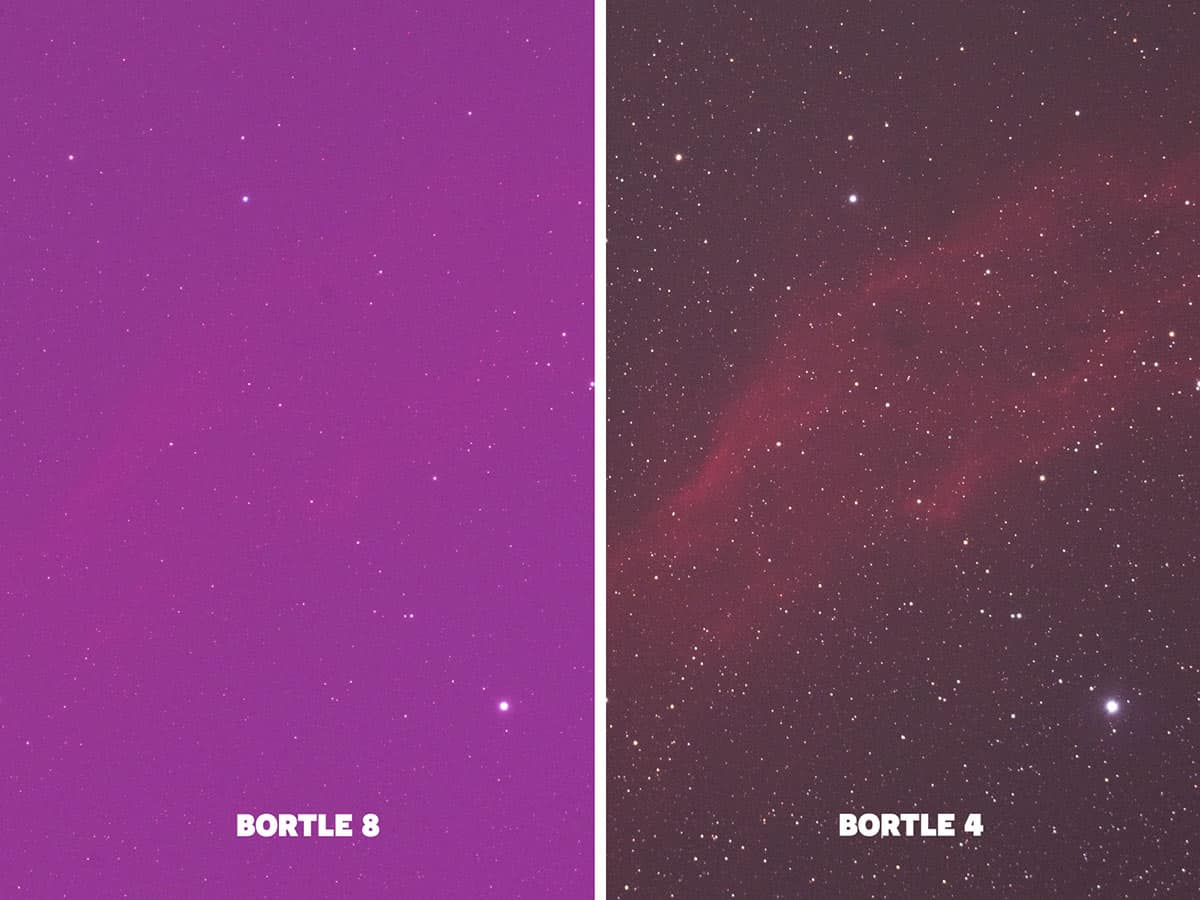
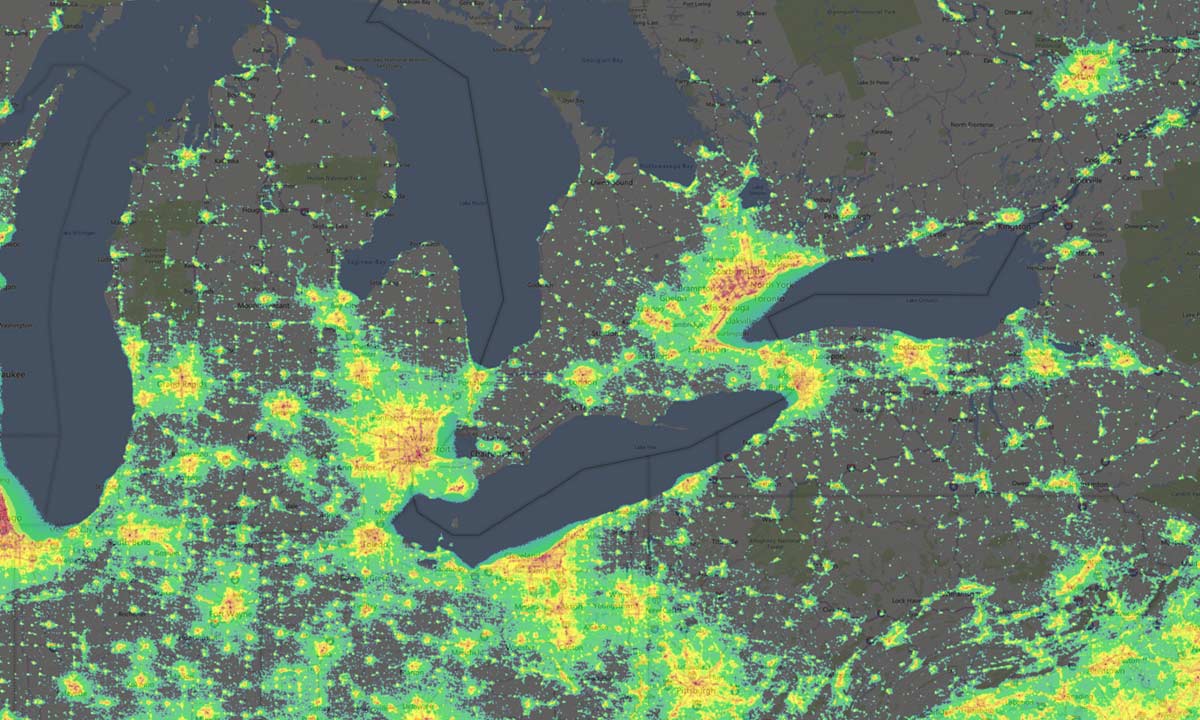

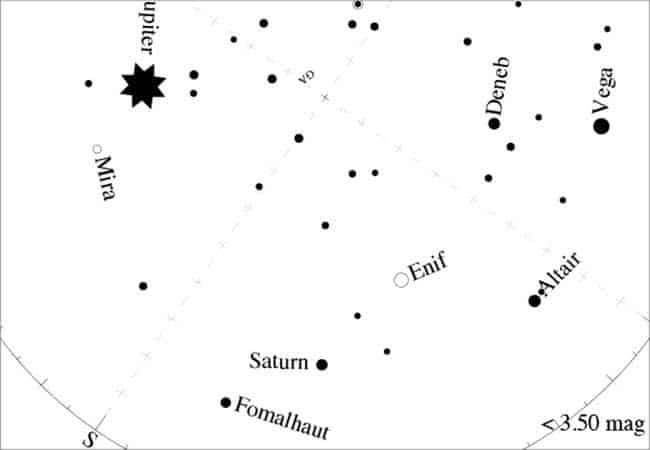
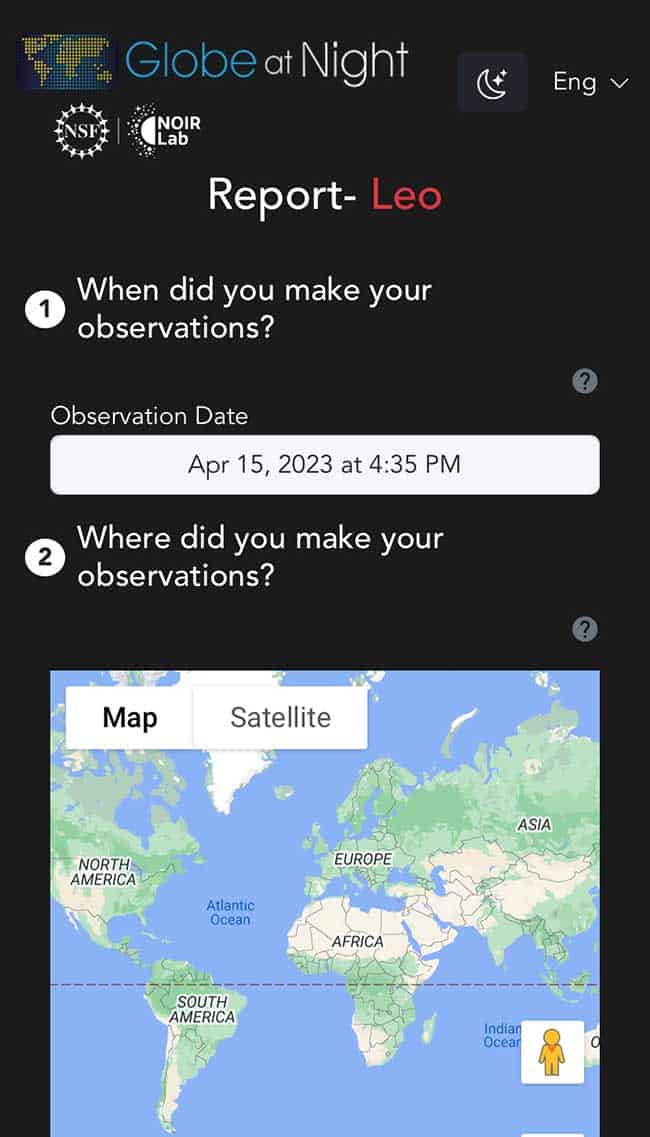
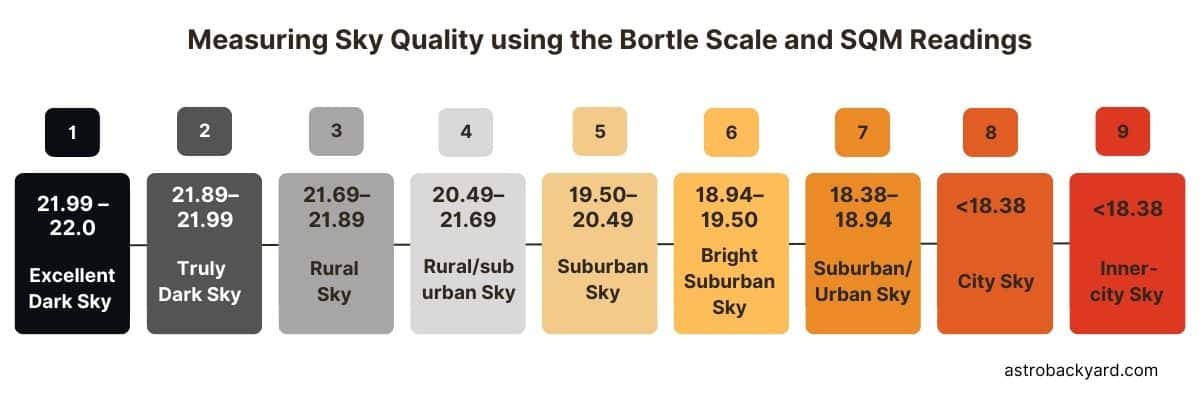
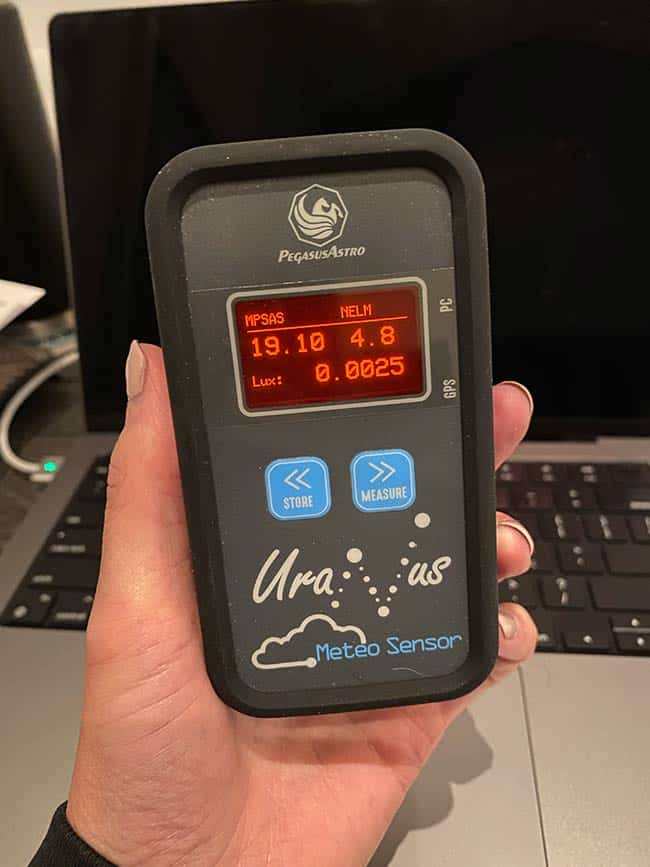
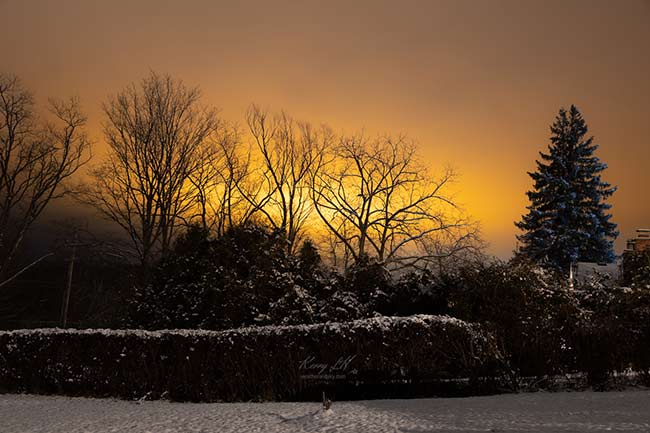


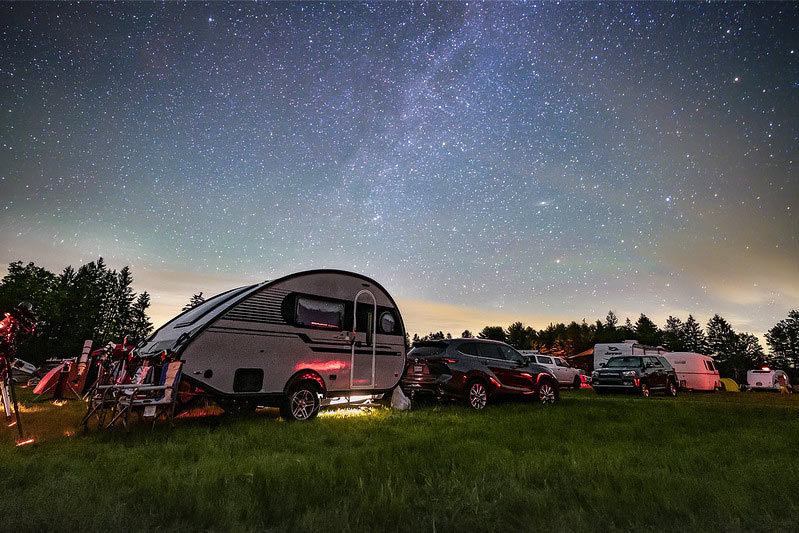




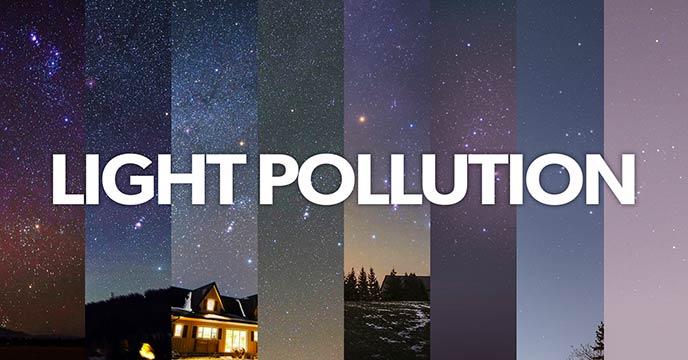
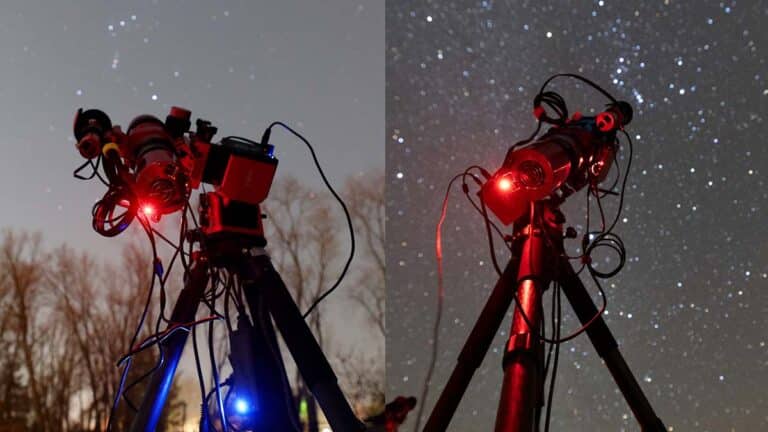
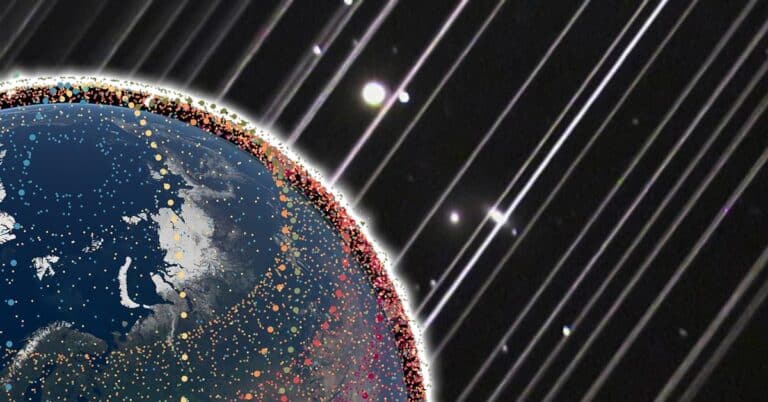
Trevor, glad to hear that you are on the mend. I’m in South Ajax which was a Bortle 7 to the north east towards Pickering, and a Bortle 6 over the lake to the south west. However, Lakeridge Health has mounted a story high white billboard facing the south east on the new LTC Centre and we are now Bortle 8 and 7 respectively.
Trevor
I have one of the Unihedron devices, but this Pegasus offering is attractive with all its features. I live in a Bortle 4 location here in Western Kentucky right outside Mayfield with access to Bortle 2 about 25 miles away though most of our areas around here outside of our towns are Bortle 3 to 4. Thanks for the interesting article. Always a great read.
I was so disappointed when visiting a remote island in the Bahamas to see that the sky was cloudy, it wasn’t clouds, it was the Milky Way!